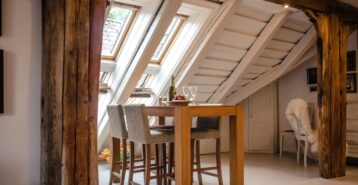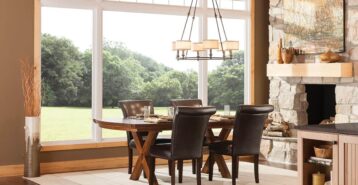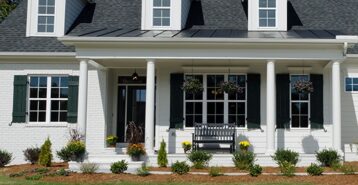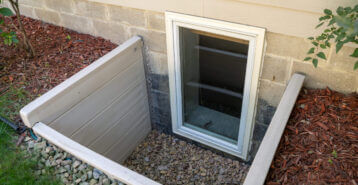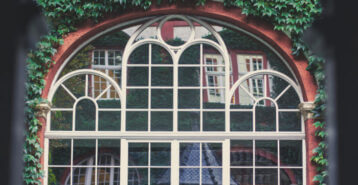What Are Bay Windows?
Bay windows are made from three angled panels that protrude outward from the exterior of the home. In addition to creating architectural interest on the outside, these windows also create additional living space on the inside. The center of the window is a picture window that increases the light coming into the house. On either side are operable windows to allow for ventilation. Together, they create a bay of windows that makes for a stunning focal point.
While bay windows typically have a fixed middle panel and operable side panels, that is not a requirement. Each panel in the window can be fixed or operable. Homeowners who want an operable bay window typically choose double-hung or casement windows to surround the picture window in the middle.
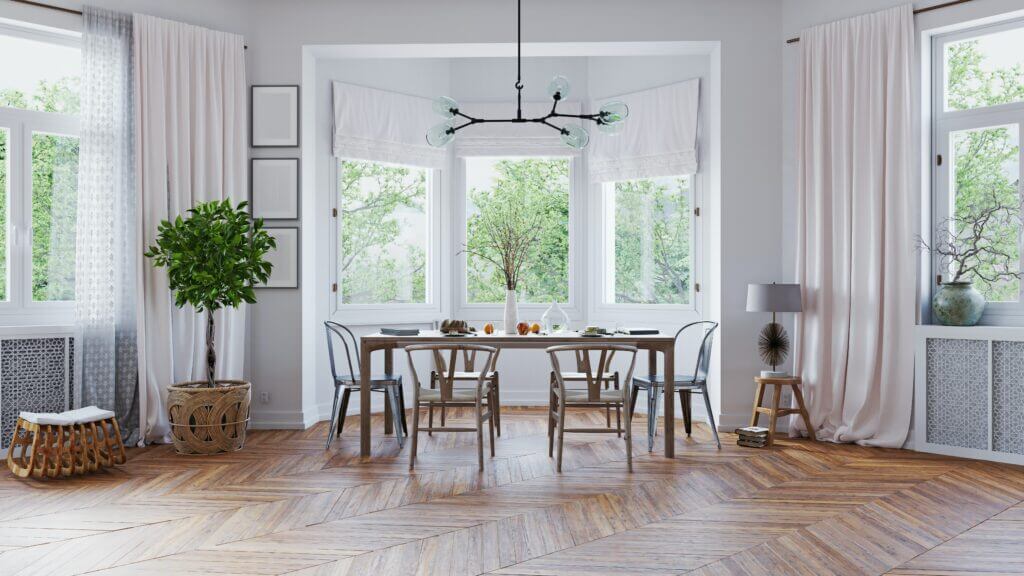
Everything You Should Know About Bay Windows
Let’s dive into costs, types, sizes, and what to do with the extra space these windows provide.
Cost
Your price will vary depending on whether you’re replacing an existing window or installing a brand new one. Frame material, glass types, and local labor rates will also impact your project’s cost.
The national average is $2,551. You can read more about bay window prices, get a low to high range for the project, and break the price down into labor and materials.
Types
There are several types of bay windows that you can choose from:
- Angled: The most common. They jut out from the exterior wall at a 30- to 45-degree angle.
- Boxed: Squared and protrude from the home’s exterior wall at a 90-degree angle.
- Oriel Style: Don’t reach the ground, so they can be added to any floor of a home.
- Circle: Decorative, semi-circle shaped windows that include crown molding.
- Canted: Reach the floor and have a flat middle picture window and two surrounding windows that are angled at 30 or 45 degrees.
You can read more about all the types of bay window designs and see pictures of them. One style that’s missing from this list? A bow window. Bow windows are a different style, and you can read all about the differences between the two.
Sizes
Since these are an expensive window, many homeowners prefer to select a standard size from a trusted manufacturer instead of custom ordering. However, if you want an especially large window or have customizations you want to see with your window, then custom sizes are of course available.
On average, bay windows are about three to six feet wide and are also about three to six feet tall.
To learn more, you can check out our guide to bay window sizes.
Benefits
There are numerous reasons to choose a bay window replacement, and the following are some more benefits you will enjoy when you get them.
- Design and Aesthetic: You’ll typically find these windows in older homes, where they add a vintage charm. They can become the focal point of a room, adding to your home’s aesthetics.
- Natural Light: They can flood a space with natural light and make it more attractive. They can also help cut down on energy costs, since you won’t have to use as much artificial light.
- Add Spaciousness: If you want a reading or breakfast nook, bay windows can create extra space in a room so you can enjoy these areas.
What to Do With the Extra Space From Bay Windows
Homeowners love bay windows not only for the architectural appeal and gorgeous views, but because they add interior space to a home. Here are some of the things homeowners do with that extra space, organized by room.
- Living Rooms: Homeowners usually put their couch or a set of conversation chairs here for ultimate coziness.
- Kitchens: A classic window seat, breakfast nook, or built-in storage are popular uses for bay windows here.
- Dining Rooms: You can position your dining table in your bay room or add built-in bench seating for a custom look.
- Bedrooms: The extra light and space make for a nice nook for plants or chairs.
There are plenty of bay window ideas to explore. Don’t forget to look into bay window treatments, too.
Is This Window Type Right for You?
If you are replacing a bay window, you should choose a frame material, glass type, and frame color that complement your home’s style. It’s important not to put off replacing the window. Any damage affects the window’s external structure, making it more difficult and expensive to replace.
If you’re thinking about installing bay windows, consider these items:
- Will it add value to your home?
- What you would do with the additional space?
- Is it worth the cost and effort to install?
Then, you’ll want to get three to four quotes from contractors to find the best price for your project.


